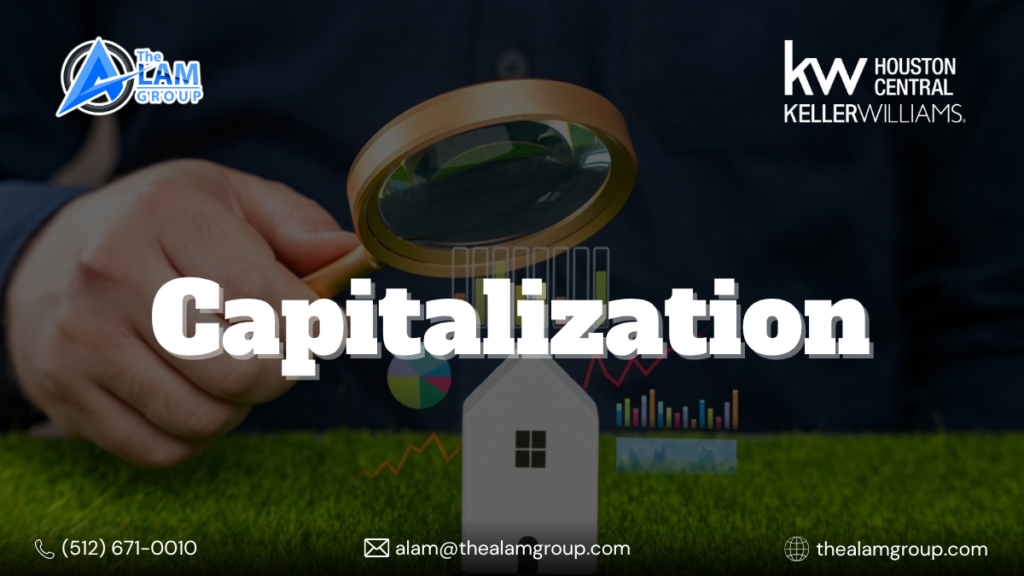In real estate investing, capitalization is one of the most important tools for determining a property’s value. Whether you’re analyzing a rental property or assessing an investment opportunity, understanding capitalization helps you make smarter, data-driven decisions.
What Is Capitalization?
In real estate, capitalization refers to the process of converting an income stream—like rental income—into a property’s value. It allows investors, appraisers, and brokers to estimate what an income-producing property is worth based on its expected returns.
Why Is Capitalization Important?
Capitalization is essential for:
- Evaluating investment properties
- Setting accurate listing prices
- Estimating return on investment (ROI)
- Comparing properties across markets
Rather than guessing or relying solely on comps, capitalization uses income performance to ground property values in financial reality.
Two Primary Income Capitalization Methods
There are two widely used approaches in real estate valuation:
1. Direct Capitalization
This method estimates a property’s value by dividing the net operating income (NOI) by the capitalization rate (cap rate).
Formula:
Value = NOI / Cap Rate
It’s commonly used for properties with stable income, such as multi-family units or commercial buildings with long-term leases.
2. Yield Capitalization (Discounted Cash Flow)
This method involves forecasting future income and discounting it back to present value. It considers changes in income, expenses, and market conditions over time—ideal for properties with variable cash flow or redevelopment plans.
Use Case: Complex investment properties, development projects, or properties in transitional markets.
Capitalization Rate (Cap Rate): A Quick Overview
The cap rate represents the expected rate of return on an investment property. It varies by location, asset type, and risk.
Example:
If a property earns $100,000 in NOI annually and the market cap rate is 6%, its estimated value is:
$100,000 / 0.06 = $1,666,667
A lower cap rate often indicates a safer investment; a higher cap rate typically reflects greater risk.
Final Thoughts
Whether you’re a new investor or a seasoned buyer, mastering capitalization methods helps you:
- Identify undervalued opportunities
- Set competitive prices
- Understand the long-term performance of your portfolio
Understanding both direct and yield capitalization puts you ahead in today’s data-driven real estate landscape.
Disclaimer: Informational Purposes Only
The content provided in this blog is for informational purposes only and is intended to offer general insights into real estate and legal topics. It is not directed at any specific individual or entity and should not be considered professional advice.
Hassaan Alam, The Alam Group, and the author of this blog do not provide legal, financial, or tax advice. Readers should consult with qualified professionals, such as attorneys, accountants, or tax advisors, before making any real estate, investment, or financial decisions.
While we strive to provide accurate and up-to-date information, we do not guarantee its completeness or reliability. Any reliance on this content is at your own discretion and risk.



